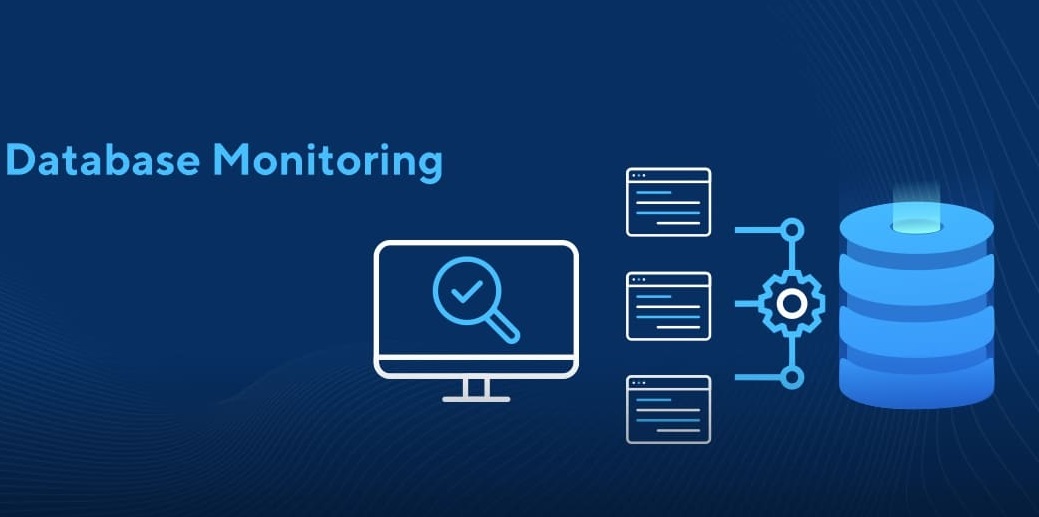Database Monitoring Services: Keeping Your SQL Server in Check
The server is making strange noises, the site isn't responding as quickly as it should be, and if that weren't enough there's already a full-blown panic on the other end of the phone line. In this article, we'll explore how database monitoring services can help prevent these kinds of situations by keeping an eye on your SQL server in real time.
 Picture 1 of Database Monitoring Services: Keeping Your SQL Server in Check
Picture 1 of Database Monitoring Services: Keeping Your SQL Server in Check
The Importance of Database Monitoring
In the realm of database management, database monitoring stands as a fundamental pillar. It serves as a holistic approach to comprehending the well-being of your SQL Server, evaluating its performance metrics, and ensuring the robustness of its security protocols.
Using advanced database monitoring tools facilitates a comprehensive evaluation of various aspects of a server's performance. These tools extend their reach to monitor critical parameters, including CPU utilization, memory consumption, and network connectivity. Moreover, they come equipped with alert systems, promptly notifying administrators when anomalies or issues arise. This proactive alerting empowers administrators to promptly take corrective measures, averting potential critical or catastrophic scenarios from unfolding.
For businesses seeking expert guidance and support in optimizing SQL Server databases, SQL Server database consulting services offered provide tailored solutions. These services include database monitoring, performance optimization, and security enhancement, ensuring the smooth and secure operation of SQL Server environments.
Core Components of Database Monitoring Services
Database monitoring services are an essential part of any database management system. These tools and agents can help you ensure that your SQL Server is functioning smoothly and efficiently, keeping your databases in check. Here are some of the core components of database monitoring services:
- Database Monitoring Tools - Software that runs on each server to monitor performance, alert users when problems arise, and provide historical data about past issues.
- Database Monitoring Agents - Software that operates on each server to gather information about its performance over time and transmit it back to a central server for analysis by administrators or developers (or both).
- Database Monitoring Software - A combination of tools and agents used for gathering information about servers' health status so as not only to identify potential issues but also help determine solutions for resolving them as well
Real-time Monitoring vs. Periodic Checks
When it comes to database monitoring, the choice between real-time monitoring and periodic checks involves a trade-off between immediacy and resource efficiency.
Real-time monitoring, albeit more expensive, operates with minimal resource requirements and boasts a quick setup process. This approach provides immediate responses to any anomalies or issues that may arise, ensuring swift corrective actions.
On the other hand, periodic checks, while more cost-effective and easier to set up, lack the immediacy of real-time monitoring. They offer a snapshot of the system at specific intervals, which might not capture transient issues. Despite this limitation, periodic checks are valuable for identifying trends over time. For instance, observing a gradual increase in CPU usage over the past month or two, without any corresponding software additions, could signal an underlying issue. In such cases, periodic checks serve as a useful tool for trend analysis, prompting further investigation into potential root causes before assuming the overall health of your SQL Server instance.
For businesses seeking a balance between effective database monitoring and cost efficiency, remote DBA service, offers comprehensive solutions tailored to specific needs. These services encompass real-time monitoring, periodic checks, and proactive measures to ensure optimal performance and security of SQL Server databases.
Performance Metrics and KPIs
There are two main types of metrics: performance and health. Performance metrics are used to measure the performance of your database and can be broken down into two categories: user-oriented, which measures how quickly users can access data, and system-oriented, which concentrates on internal operations such as CPU usage or disk space utilization. Health metrics offer insight into the overall health of your SQL Server by providing information about things like backups/restores and security settings.
Health KPIs are used to determine if something is wrong with your database, while Performance KPIs help identify what needs improvement so that you know where to focus your efforts when troubleshooting issues with your SQL Server instance(s).
Automated Alerting Systems
As you may have guessed, automated alerting systems can help you to monitor your database. They can be used for many things, including:
- Notifying you when there are problems with the server or one of its databases. This could involve alerting you when SQL Server is running low on memory or disk space, or experiencing frequent spikes in CPU usage. These alerts can indicate issues such as too many processes running simultaneously or inefficient queries.
- Alerting when specific metrics exceed set thresholds, such as high read latencies, may signal a potential issue requiring attention before it escalates.
- Alerting on security breaches - if someone tries to access files they shouldn't have access to (such as deleting them), this would trigger an alert so they can be stopped before they cause any damage!
Query Analysis and Optimization
Query analysis and optimization is an important part of database monitoring. As with any application, you'll want to know what's happening inside your SQL Server environment. You can achieve this by analyzing the queries running in your database, identifying any slow-running queries, and optimizing them for faster performance.
Query analysis is fairly straightforward: it involves looking at the number of queries being run (both overall and per second), how long each query took to complete, whether any errors occurred during execution, and so forth. The results give you a good idea of what's going on with your SQL Server environment at any given time and help ensure that everything stays humming along smoothly!
Query optimization refers generally speaking to making changes or tweaks that improve performance without changing functionality or adding new features (for example). This might involve rewriting some queries so they're more efficient; adding indexes; changing parameters for stored procedures/functions etcetera...
With the right tools, you can optimize your SQL Server and make sure it's running smoothly. Database monitoring services like ours can help you keep tabs on key performance metrics and KPIs, automate alerting systems, and even provide query analysis so that you can identify any issues before they become problems.
You should read it
- Database monitoring in MS SQL Server
- Oracle launched an autonomous database exclusively for business customers
- Top 5 best website attacks monitoring services Deface 2020
- Database monitoring with SQL Profiler
- eQuiz - Multiple choice test on SQL
- 3 best system monitoring tools for Ubuntu
- Top Pros and Cons of Managed IT Services
- Best SNMP monitoring software
- 5 useful network monitoring tools
- 10 best Ping monitoring software and tools
- eQuiz - Multiple choice test on ASP
- Use the ALTER DATABASE command to migrate DATABASE in SQL Server
May be interested

How to Create and Utilize a Recovery Boot Disk with TeraByte Unlimited Software

How to completely remove Norton or McAfee from Windows

How to fix Windows Update error 0x80073701

How to create a shortcut to clean the Recycle Bin on Windows 10/11

7 new features of Moment 4 update added to Windows 11

How to fix UnityPlayer.dll error (0xc0000005) in Windows 10/11






 Database monitoring in MS SQL Server
Database monitoring in MS SQL Server How to recover the database in MS SQL Server
How to recover the database in MS SQL Server 6 leading Exchange Server monitoring software
6 leading Exchange Server monitoring software 10 best Ping monitoring software and tools
10 best Ping monitoring software and tools Use the ALTER DATABASE command to migrate DATABASE in SQL Server
Use the ALTER DATABASE command to migrate DATABASE in SQL Server Create Active Directory accounts from the Exchange database (Part 1)
Create Active Directory accounts from the Exchange database (Part 1)